Himalayan cats are more than just pretty. These longhair, blue-eyed beauties have an elegance that's hard to ignore, and their personalities make them an irresistible addition to many homes. But what's the secret behind their unique appearance and behavior? How did they come to be, and what makes them different from other breeds?
In this comprehensive guide, we'll not only explore the physical attributes that make the Himalayan so eye-catching but also discuss their history, temperament, health issues, and even the fascinating development of their distinctive color-points.
Whether you're a Himalayan cat owner, considering bringing one into your home, or simply an admirer of these captivating creatures, this article promises a deep and engaging insight into a breed that has enchanted cat lovers around the world. Join us, and let's discover what sets the Himalayan apart in the world of cats.

History of Himalayan Cats
Starting the Himalayan Breed
The Himalayan breed began in 1930 when Dr. Clyde Keller of Harvard Medical School and Virginia Cobb of Newton Cattery embarked on a breeding project. They aimed to create a long-haired, Persian-bodied cat with the color-points of the Siamese. After multiple breeding efforts, they succeeded in producing "Newton's Debutante." This was the first cat recognized as the beginning of the Himalayan Breed.
Recognition and Evolution of the Breed
The Cat Fanciers' Association (CFA) accepted the breed in 1957. In the 1980s, the Himalayan merged with the Persian breed. They became a color variation of the Persian. To breed CFA-registered Himalayans now, you need a registered Persian or Himalayan as both the sire and dam. Siamese are not allowed in the breeding line.
Origin of the Himalayan Name
The breed was named "Himalayan" because of its coloration, resembling that of Himalayan animals, such as the Himalayan rabbit.
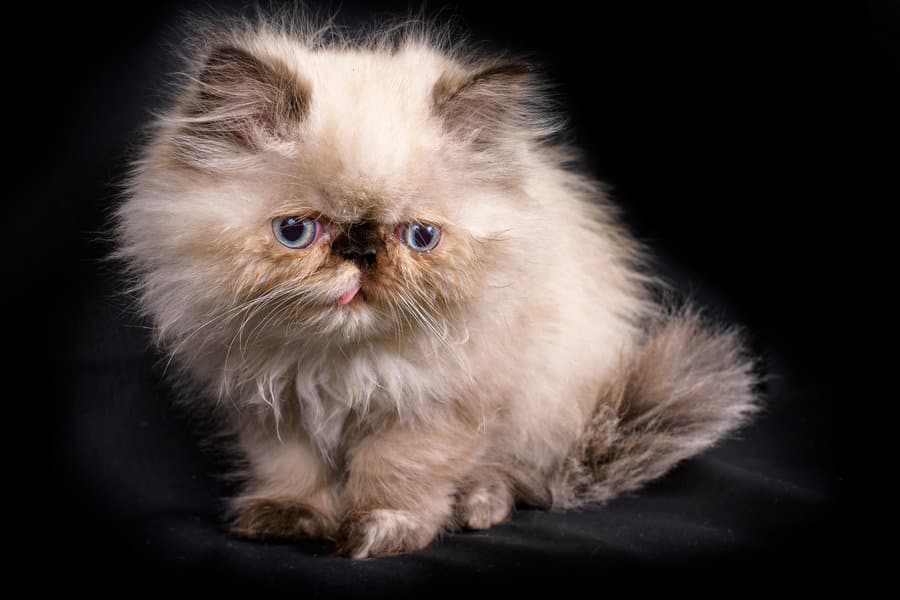
Himalayan Cats - Breed Characteristics
Introduction to the Himalayan Breed
Himalayan Cats, a breed that charms cat enthusiasts with its distinct appearance and gentle nature, have specific characteristics that set them apart from other breeds. Whether you're considering adopting one or simply intrigued by this particular breed, understanding its unique physical attributes will deepen your appreciation.
Physical Characteristics
Head and Neck
The Himalayan's head is round and massive. It's set atop a thick, short neck. The ears are small and round-tipped, contributing to the overall soft and inviting appearance.
Eyes
The eyes of the Himalayan are a captivating feature. They're large, round, and wide-set, with a blue hue that ranges from a light, almost clear blue to a vivid, bright blue. This striking eye color adds to the breed's allure.
Body Structure
A medium to large body defines the Himalayan. It is broad across the rump, providing a robust foundation. The legs are short and stubby, matched with large, round feet. This composition gives the Himalayan a sturdy, yet graceful appearance.
Fur Type
The fur of the Himalayan can be one of two types. It's either long and flowing or medium-long and thick. Regardless of the length, it adds to the breed's luxurious look and requires regular grooming to maintain its beauty.
Color Points of the Himalayan
The CFA recognizes an extensive range of color points in the Himalayan. These include chocolate, seal lilac, blue, red-tortie, cream, seal-lynx, blue-lynx, red-lynx, cream-lynx, tortie-lynx, blue-cream lynx, chocolate-lynx, lilac-lynx, chocolate-tortie- lynx and lilac-cream- lynx. These points appear on the facial mask, feet/legs, tail, and genitals, while the body shows various shades from white to fawn.
Understanding the color points is essential for breeders and show participants. These specific markings make the Himalayan unique, and the combination of colors creates a visually appealing contrast with the body's main shade.
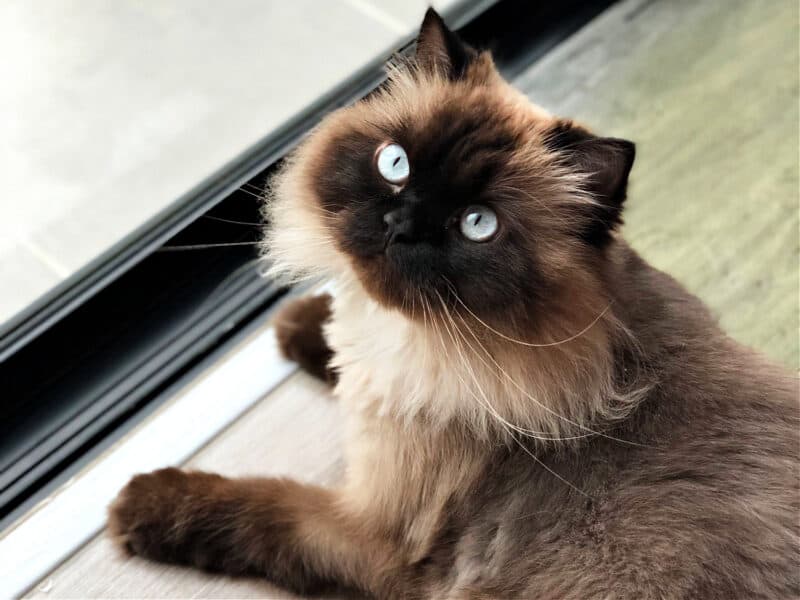
SIGN UP FOR THECATSITE'S EMAIL UPDATES >
Himalayan Cats - Temperament and Health Issues
Introduction: Understanding Your Himalayan Cat
Himalayan Cats are well-known for their calm disposition, unique behaviors, and specific health concerns. Whether you already have one or are considering adding a Himalayan to your household, understanding their temperament and health requirements is vital.
Temperament of Himalayan Cats
Calm and Easygoing Nature
These cats, like their Persian bloodlines, are laid-back and calm. Very easygoing, cats that enjoy playing. Mine like interactive toys such as DaBird, or one that I made by hand from a piece of fringed fabric taped to the end of a rod off a set of mini blinds. I can tire them out with one of these toys. Prior to bedtime, this is a good plan, for then they sleep through the night and don't wake me at odd hours.
Not Lazy, Just Different
Being laid-back cats does not however mean they are lazy. They simply view the world differently than most short-haired cats. For example, around my house, there are always short-haired kittens running around, for I do rescue work as well. These rescued kitties are always up to something. My Himalayans watch these kittens with what I liken to be amusement in their eyes. They can't seem to figure out what all the fuss is about, with all the activity going on.
The Quirks: "Cat Fits"
Babycakes and Yum (two of my Himalayans) are prone to what we refer to as "cat fits." They run through the house at breakneck speeds for no apparent reason. But that's about all they do. They don't get into trouble just for the sake of stirring things up.
Health Issues in Himalayan Cats
Breathing Problems
There are two health issues associated with Himalayans, both stemming from the extremely flat "pug" face that is so treasured by the show breeders right now. This subjects the cats to major breathing problems along with watery eyes. The shortened breathing tube makes it difficult for some of the cats to get a good breath, and the tear ducts become compressed, causing the eyes to leak almost continuously.
Watery Eyes
The compressed tear ducts often cause the eyes to leak continuously. While this is not usually life-threatening, it is something prospective owners need to be aware of.
Daily Care Requirements
These are not usually life-threatening problems. However, if you are thinking of buying or rescuing a Himalayan, the fact that their eyes and noses need to be wiped daily is something you need to be aware of. It becomes a part of the routine, just like combing and brushing their fur. It's just part and parcel of the breed.
Himalayan Cats - Kitten Development
These beautifully colored kittens come into this world pure white or cream. They do not start developing the points for a couple of weeks, and then darken as they mature. The darkening of the points occurs due to the slight difference in temperature from the body to the extremities, cooling off a couple of degrees, but it is enough to elicit this remarkable change in appearance.
While most kittens are ready to leave their mom at twelve weeks, most Himalayans are not fully mature enough to leave their mom until they reach sixteen weeks of age. They do not appear to mature socially and emotionally as fast as their shorthaired and other purebred counterparts, but their sexual maturity develops at a normal pace.
Himalayan Cats - Personal Experience
I bought my first male Himalayan in March of 1993. I purchased my female in August of the same year. My husband and I then spent the next ten years breeding and learning about these sweet animals. Over the years, we have collected a seal-point, a blue-point, a flame-point (red), and two torties.
Each of these animals has their own distinct personalities, and I would not trade any of them for the world. They are completely different from the short-haired stray cats of my childhood, but it's a good difference!
These wonderfully laid-back cats will allow you to do things other cats would object to. Small children can even lug them around, in that awkward way that children have about them, but as long as the child doesn't hurt them, the cats don't appear to care.
In the Spring of 2003 when I had to have surgery, I found that my cats were instrumental in making me feel better and lowering my blood pressure. I spent a week in bed, surrounded by their comfort, and they rarely left my side except to eat and use the litter pan. Once I recovered, they found other places to occupy themselves.
It is all these characteristics rolled up in one cat breed that makes me say if I ever went back to do it over. I would pick the Himalayan every time. They have enhanced my life greatly!
SIGN UP FOR THECATSITE'S EMAIL UPDATES >
Written by Cindy Ball
Cindy Ball, lives in Jasper, Alabama with her husband Charlie her 5 Himmies, and an ever-changing number of strays and feral cats that seem to find her, even as she finds homes for others.
Comments? Leave them using the form below. Questions? Please use the cat forums for those!
Note: We may get commissions for purchases made through links on this page.

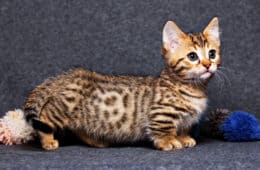
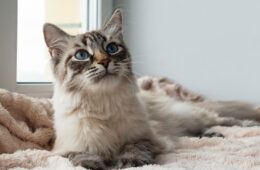
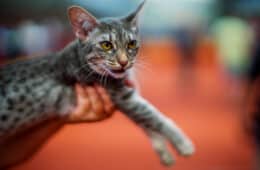
3 comments on “Himalayan Cats [The All-In-One Guide Including Personal Experience]”